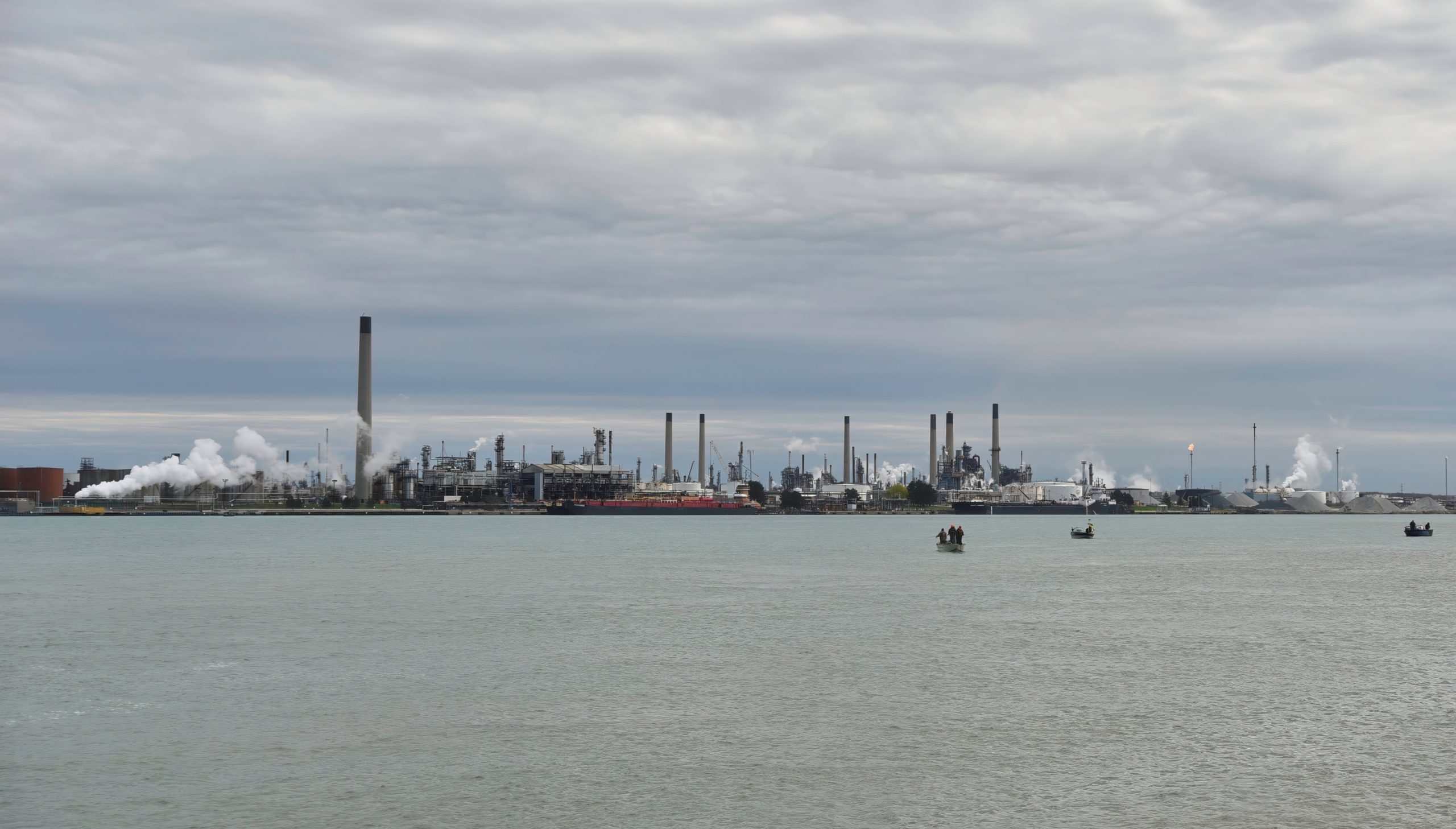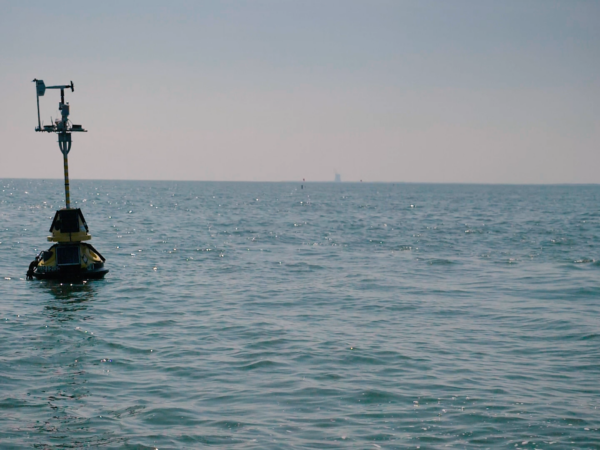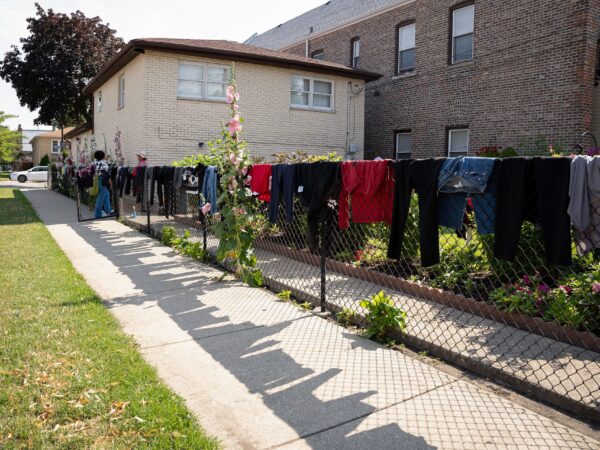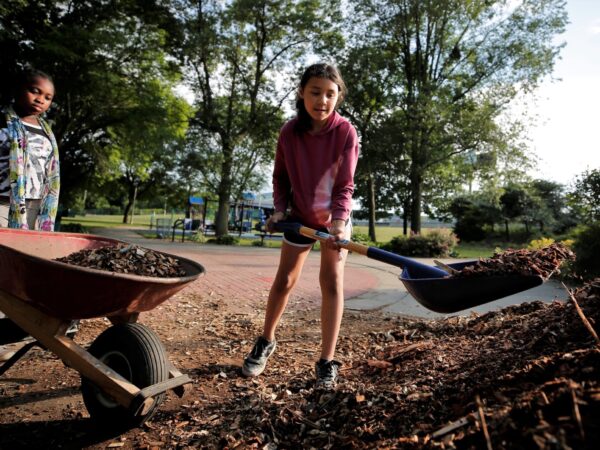
By Brett Walton, Circle of Blue
The Great Lakes News Collaborative includes Bridge Michigan; Circle of Blue; Great Lakes Now at Detroit Public Television; and Michigan Radio, Michigan’s NPR News Leader; who work together to bring audiences news and information about the impact of climate change, pollution, and aging infrastructure on the Great Lakes and drinking water. This independent journalism is supported by the Charles Stewart Mott Foundation. Find all the work HERE.
- Legionnaires’ disease cases are higher among Black Americans.
- U.S. cases are showing stronger seasonal and regional trends.
- Many factors could explain these outcomes: changing weather and temperature patterns, aging infrastructure and populations, more attentive testing, and water and energy conservation.
A respiratory illness linked to bacteria that grow in building plumbing and water distribution pipes is exhibiting more pronounced geographic, seasonal, and racial patterns, according to a Centers for Disease Control and Prevention analysis of nearly three decades of case data.
Researchers knew that Legionnaires’ disease, an illness resembling pneumonia, peaks in the summer, affects older people, and is most prevalent in the United States in the swathe of land that stretches from the Midwest to New England. The CDC’s analysis confirmed that those trends are strengthening. But what stood out most to Albert Barskey, the lead author of the study, were racial outcomes.
Cases among Black Americans, when adjusted for age and population, were about 25 percent higher than among white Americans. And that gap, one of many environmental health risks with a racial divide, was growing.
“We found the widening disparity in incidence between Black or African American persons and White persons quite striking and concerning,” Barskey, an epidemiologist in the CDC’s Division of Bacterial Diseases, wrote in an email to Circle of Blue.
What is driving these geographic, seasonal, and racial trends? Explanations were beyond the scope of this assessment. Barskey noted that other studies have identified factors that are associated with Legionnaires’ cases. For geographic patterns, temperature, precipitation, and humidity play a role. The regions seeing a spike in Legionnaires’ are also experiencing increasing summer precipitation.
For racial disparities, the study notes that Black Americans often live in lower-quality and older housing and are in poorer health. These social and environmental factors for health are widespread. Other studies have shown that Black Americans are more likely to have worse drinking water quality and higher exposure to air pollutants.
Areas with a large number of vacant homes are an additional risk factor because Legionella bacteria grow in stagnant water without adequate disinfection, said Caitlin Proctor, an assistant professor at Purdue University who works on plumbing and water safety.
Legionella bacteria live in lakes and rivers, but they become a public health problem in buildings, where they multiply in the nooks and crannies of plumbing, heating, and cooling systems. A warming climate may provide an environmental foothold. Water and energy conservation, seen as beneficial actions on their own, may also have a negative influence if they create conditions within plumbing systems that allow bacteria to grow.
The U.S. population is aging as well, and people above age 65 and those with weaker immune systems are more susceptible to Legionnaires’ disease, which is fatal in about 10 percent of cases on average. People are infected with the noncontagious disease when they inhale airborne bacteria attached to water droplets.
The CDC study compared Legionnaires’ cases in the last two decades to a baseline period from 1992 to 2002, after which case counts began to rise. Nationally, the number of cases in 2018, when adjusted for age differences, was about 5.5 times higher than the baseline period.
Seasonal peaks are becoming more distinct, the study found. In the baseline period, 58 percent of cases occurred between June and November. In the last 15 years, about 69 percent were recorded in those months.
Proctor, who was not involved in the CDC study, said that researchers need better data to understand how cases are linked with building age, water management practices, weather changes, and underlying health conditions.
“The CDC data is very broad,” Proctor told Circle of Blue. “Most cases don’t identify where the Legionella came from. Was it home plumbing? A school? Another building? Without those details, it’s hard to get into specifics.”
There were 9,933 Legionnaires’ cases reported to the CDC in 2018, the last year for which complete data has been compiled. Because not all Legionnaires’ disease cases are properly identified, the actual number is likely higher. A National Academies of Sciences, Engineering, and Medicine report estimated the true number of cases to be between 52,000 and 70,000 annually.
Catch more news at Great Lakes Now:
Rising Cost of Water in Michigan Leads to Affordability Problems
Climate Change Grips Trout Streams Across the Nation: How Anglers Are Responding
Featured image: Chemical Valley in Sarnia, Ontario, sits on the St. Clair River upstream of drinking water intakes for several Detroit metropolitan municipalities. (Photo Credit: Lester Graham/Michigan Radio)




